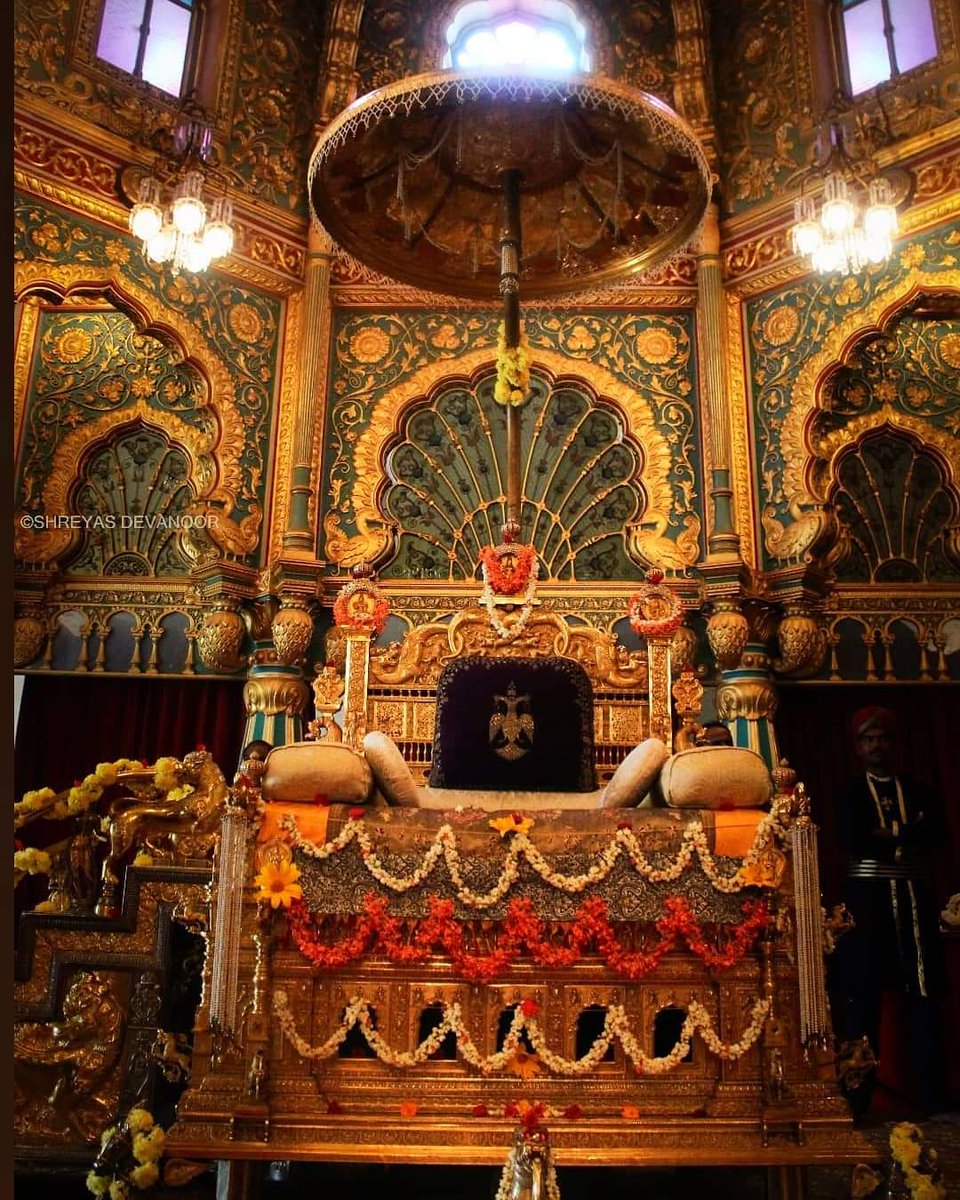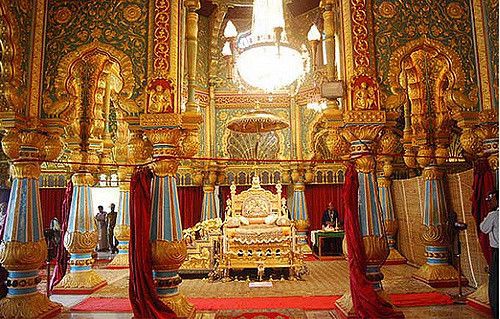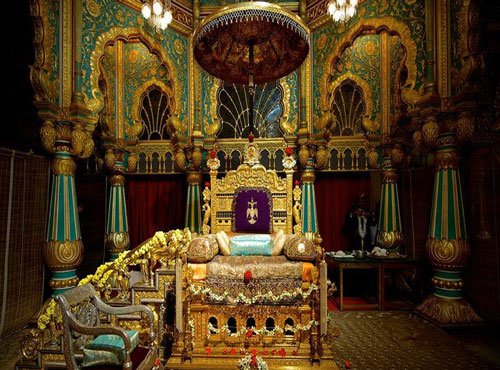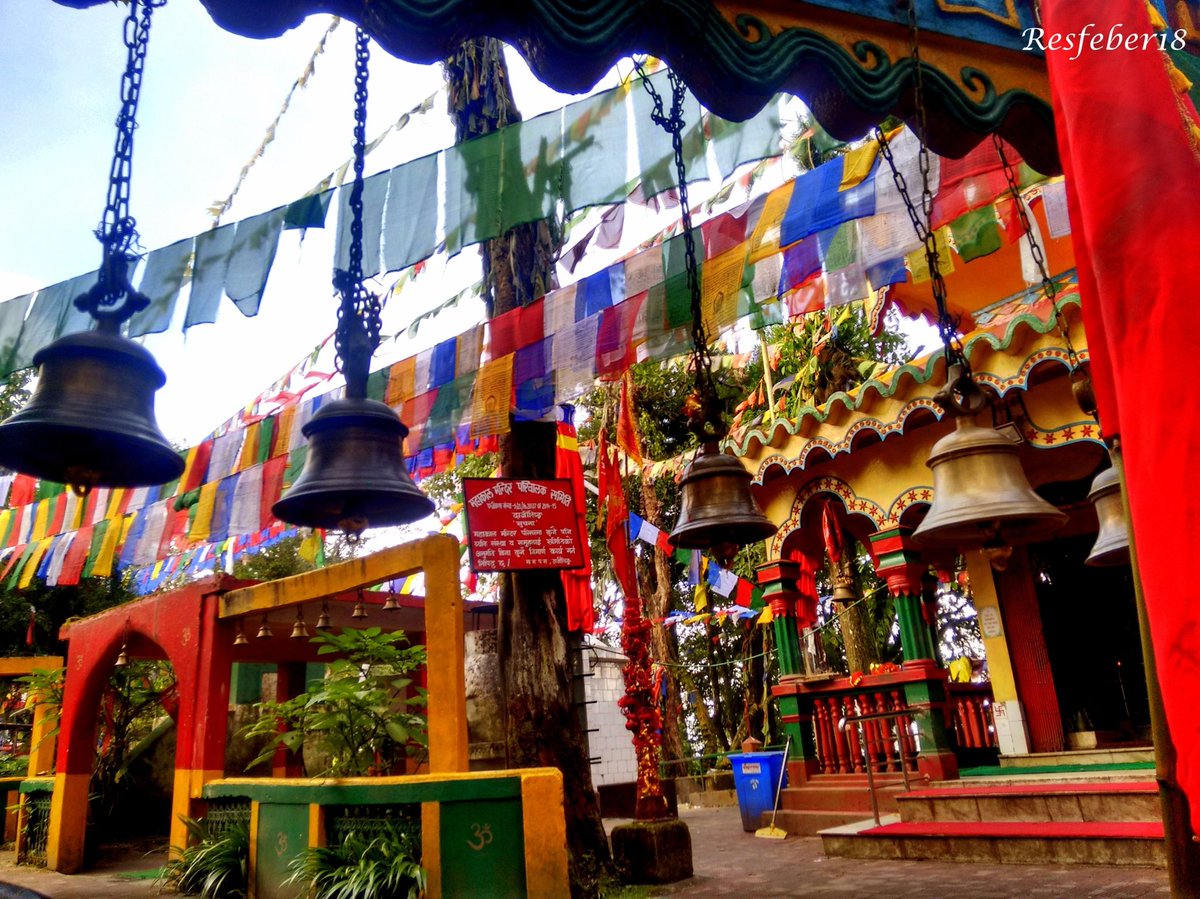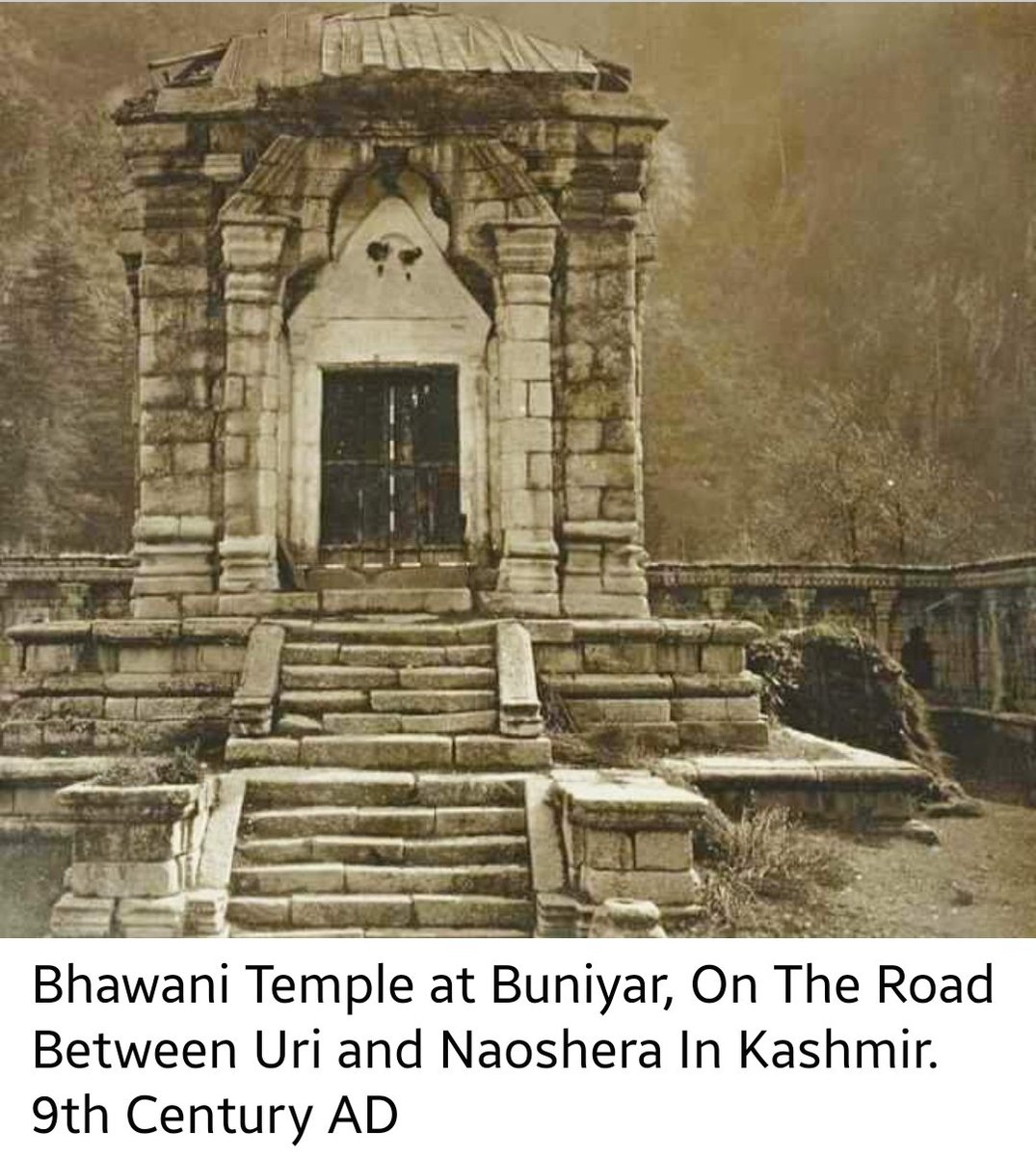
🌺Do you know the great King of Bahraich named Suheldev?
Here's his story.🌺
The Ghznavid invasions had crippled India like no other invasion ever before. Mahmud of Ghzni was perhaps one of the first invaders to actually dent the strong Indian defences after alexander the great.
Here's his story.🌺
The Ghznavid invasions had crippled India like no other invasion ever before. Mahmud of Ghzni was perhaps one of the first invaders to actually dent the strong Indian defences after alexander the great.

But ultimately he couldn’t follow up with the empire as his kingdom stopped at the north western region of India.
His nephew, Salar Masud would go on to continue his dream of raiding and plundering India every single year.
His nephew, Salar Masud would go on to continue his dream of raiding and plundering India every single year.
As a young upstart, Salar showed ferocity just like his uncle while his martial fervour eclipsed even that of his warrior ancestors.
At a young age of 16 he led his army to capture various parts of northern India including Ajmer and Delhi by the help of the Ghaznavid Army.
At a young age of 16 he led his army to capture various parts of northern India including Ajmer and Delhi by the help of the Ghaznavid Army.

His eastward expansion continued till he reached the region of Bahraich.
Throughout his journey, the bardic tales states that he plundered temples and monasteries, showing to the populace how weak their local rulers were.
Throughout his journey, the bardic tales states that he plundered temples and monasteries, showing to the populace how weak their local rulers were.

But this king of Shravastavi was different.
Suheldev was the valiant son of Mordhwaj and a very just ruler.
He was the one who united all the northern kingdoms under one rule to oppose the oncoming assault.
Suheldev was the valiant son of Mordhwaj and a very just ruler.
He was the one who united all the northern kingdoms under one rule to oppose the oncoming assault.
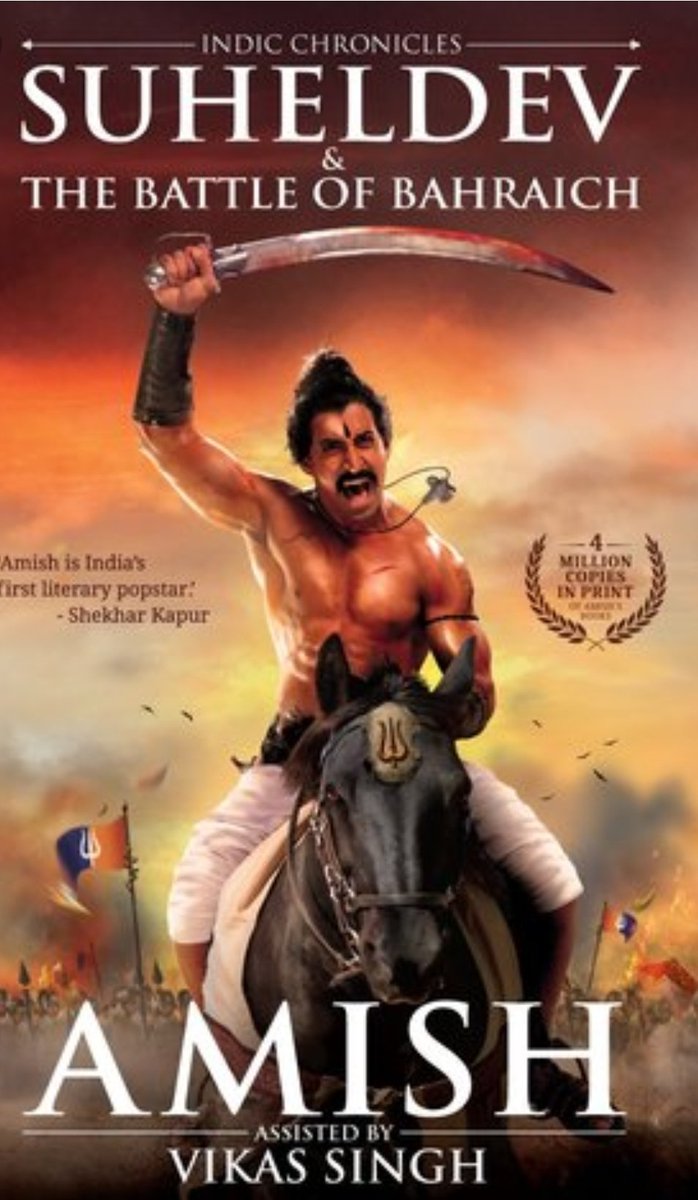
With his allies Suheldev could muster a force of at most fifteen to twenty thousand soldiers but it was still not much.
The Invading army had up to thirty-two thousand veteran campaigners by their side.
The Invading army had up to thirty-two thousand veteran campaigners by their side.
The king’s minister begged him to form a truce with the enemy, to some how ensure their survival, but Suheldev knew what had happened to those who under the idea of security trusted the enemy horde.
The oncoming army has to be dealt with strength and strategy.
The oncoming army has to be dealt with strength and strategy.

And I think this is where Suheldev won where other kings didn’t.
The other kings who had capitulated under the invading horde either just surrendered in hopes of mercy or were destroyed due to their sheer lack of manpower.
The other kings who had capitulated under the invading horde either just surrendered in hopes of mercy or were destroyed due to their sheer lack of manpower.
But Suheldev knew about it, and tried to use it for his advantage.
He wasn’t going to just let his men die so that he could satiate his thirst for glory. He was playing for the keeps this time.
He wasn’t going to just let his men die so that he could satiate his thirst for glory. He was playing for the keeps this time.

With such a massive force, the invaders needed a constant supply of fresh food and water to continue on their march.
It is said that the Ghaznavid army had hundreds of domestic animals which provided meat and milk for consumption.
It is said that the Ghaznavid army had hundreds of domestic animals which provided meat and milk for consumption.
If the defenders managed to destroy the food source, then the enemy wont last for long.
Suheldev dispatched his soldiers for a surprise attack.
And his grand strategy will prove just right.
Suheldev dispatched his soldiers for a surprise attack.
And his grand strategy will prove just right.
In the early mornings of the next day a slight mist had covered the land.
Salar’s men woke up from their slumber and tried to ready the breakfast when to their shock, the entire cattle was freed while their sentries and guards lay dead of the ground.
Salar’s men woke up from their slumber and tried to ready the breakfast when to their shock, the entire cattle was freed while their sentries and guards lay dead of the ground.

Suheldev had perfectly co-ordinated a night raid against the enemy. This sort of a daring attack could only mean that the defenders were very near.
Before Ghazi could react to the news, the ground beneath him started to shake.
Before Ghazi could react to the news, the ground beneath him started to shake.

As the mist cleared, the entire army of defenders approached on a warpath. Leading the charge was none other than the brave king Suheldev.The onslaught of so many soldiers marching together barefoot and on horseback churned the ground beneath them. 

The Ghaznavid force quickly formed a makeshift battle formation to face the head on collision. But due to the staggering number of men, the entire unit was in utter chaos.
Enemy soldiers formed tight skirmishing parties and tried to tackle the defenders.
Enemy soldiers formed tight skirmishing parties and tried to tackle the defenders.
With a great force the two sides met and the battle of Bahraich now was in full swing.Considering that Suheldev’s army was far smaller in size, his men did an amazing job in handling the invaders. 

The first two parties of the Ghaznavi was utterly destroyed while the rest of his troops were being routed.
According to the local legends, as a small ridge between the enemy troops opened, Suheldev’s mount galloped forward trying to land a decisive blow to the enemy leader.
According to the local legends, as a small ridge between the enemy troops opened, Suheldev’s mount galloped forward trying to land a decisive blow to the enemy leader.
With sword in one hand and shield in another, the two warriors faced of against each other. The clang of their sword echoed throughout the battle field.Suheldev’s assault on Salar was far more than what the latter could have imagined because as the dust settled,.. 
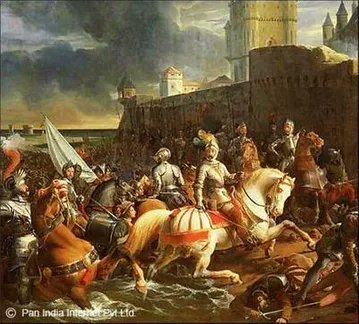
..it was clear that if help didn’t arrive soon then calamity might strike on the enemy leader.
Quickly Salar Masud shouted for help and his aide de camp responded.This was exactly what Suheldev was counting on.
Quickly Salar Masud shouted for help and his aide de camp responded.This was exactly what Suheldev was counting on.
In a glimpse of lapse, Salar’s focus shifted from the duel to his retainers. That was exactly when the king of India landed a clean blow of his sword on his enemy. 

The blade sliced through a portion of Ghazi’s torso, severely wounding him.
Suheldev made his escape in nick of time as he killed enemy force while getting out. According to some sources Suheldev also shot a retreating arrow which landed right on Salar’s neck.
Suheldev made his escape in nick of time as he killed enemy force while getting out. According to some sources Suheldev also shot a retreating arrow which landed right on Salar’s neck.
On the battle front,contingent after contingent of enemy was being shattered &now with their leader mortally wounded a general retreat was ordered.Suheldev’s force wouldn’t go easy on barbarians as they kept on chasing &killing enemy force till they were forced out of Bahraich.
Suheldev’s staggering victory against near impossible odds acted as a shining example that local rulers could defeat the foreign invaders.
For his valour he was awarded the title of ‘Protector of Dharma’ for the entire region.
For his valour he was awarded the title of ‘Protector of Dharma’ for the entire region.
Salar on the other hand couldn’t make it back alive, dying on his way due to serious wounds inflicted by Suheldev.
B'coz he died during war,he was termed as a Ghazi and a shrine was built for him in admiration and respect.
B'coz he died during war,he was termed as a Ghazi and a shrine was built for him in admiration and respect.
Suheldev’s defence on northern India had achieved a legendary status. Because of his victory, the Ghaznavid forces understood that they could no longer plunder the country without facing dire consequences.
The Indian King’s glorious victory had reverberating effect as this halted Ghaznavid raids for a long time &for more than a century,no invader dared to set foot here with malicious intent.
Had by any unfortunate means Suheldev lost,then India as we know it might not even exist.
Had by any unfortunate means Suheldev lost,then India as we know it might not even exist.
Credit: Various Sources
• • •
Missing some Tweet in this thread? You can try to
force a refresh


